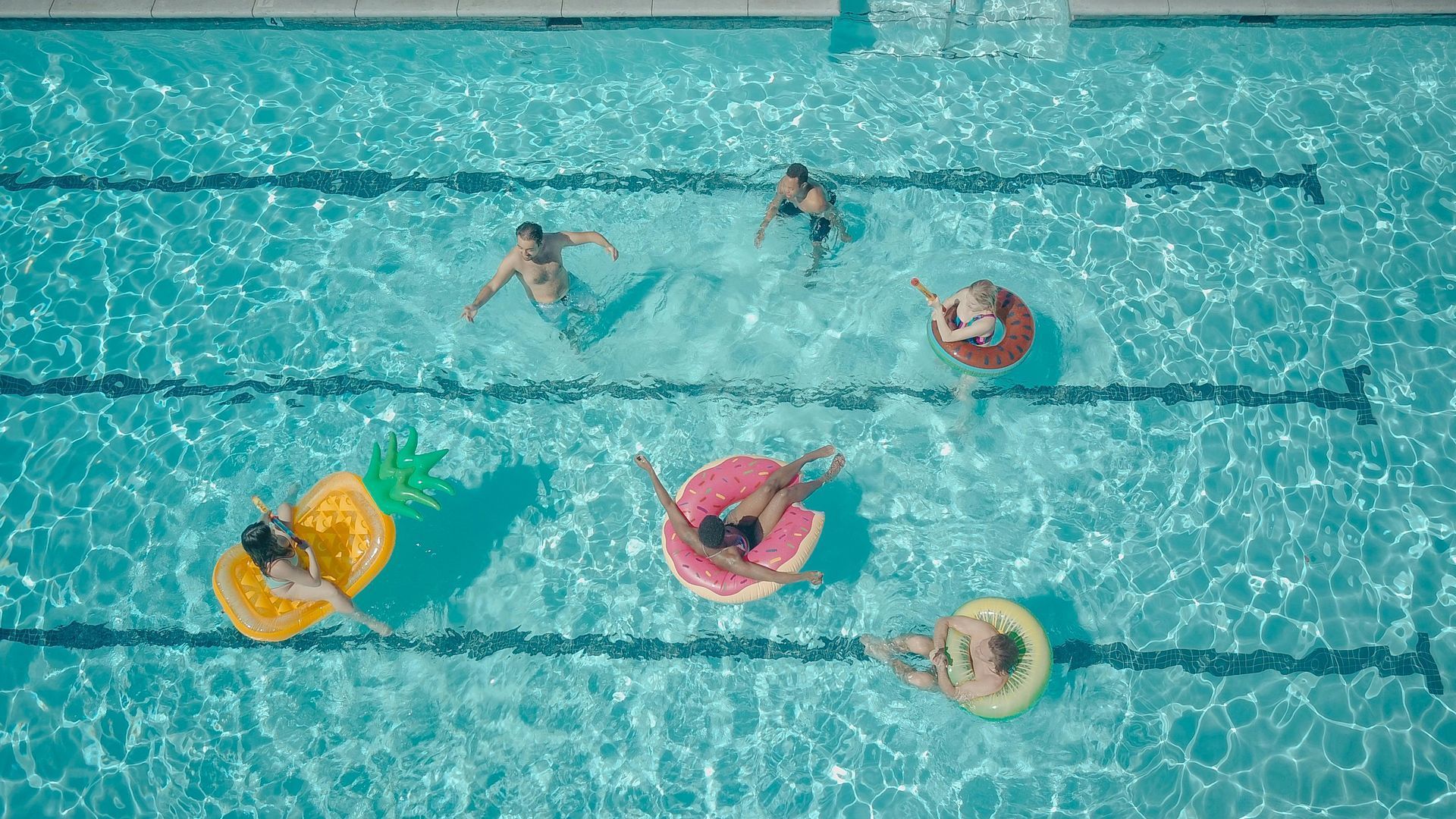August 29, 2025
A sparkling, well-maintained swimming pool is the crown jewel of any backyard. But over time, even the most pristine pools start to show signs of wear—cracks, discoloration, rough surfaces, or persistent leaks. If you're noticing these issues, it might be time to consider resurfacing your swimming pool.
Pool resurfacing is more than just a cosmetic upgrade—it's essential maintenance that ensures safety, longevity, and functionality. In this guide, we’ll break down when you should resurface your pool, why it’s necessary, and how the process works from start to finish.
When Should You Resurface Your Pool?
Knowing the right time to resurface your pool can save you money, time, and bigger headaches down the line. Here are some key signs it’s time to take action:
1. Surface Cracks and Peeling
Small cracks may seem harmless at first, but they can grow quickly, leading to leaks and structural damage. If you see peeling plaster or flaking paint, it's a clear indicator that the surface layer is failing.
2. Rough Texture
If the once-smooth surface feels like sandpaper under your feet, it’s probably time to resurface. This isn’t just uncomfortable—it can cause cuts and scrapes and even damage swimwear.
3. Persistent Stains or Discoloration
Algae, minerals, and chemical buildup can stain your pool’s surface over time. If cleaning and chemical treatments don't help, resurfacing may be the only solution.
4. Visible Corrosion or Rust
Rust marks or rebar stains indicate deeper structural problems. These need to be addressed during the resurfacing process to prevent long-term damage.
5. Frequent Leaks
If your water bill is creeping up or you’re constantly refilling your pool, resurfacing may be necessary to seal small leaks before they grow into costly repairs.
6. It's Been 10–15 Years
Even without visible damage, most pool surfaces naturally degrade over time. Depending on the materials used (plaster, pebble, quartz, etc.), resurfacing every 10–15 years is a smart preventative step.
Why Pool Resurfacing is Important
You might be wondering—can’t I just patch it up? Why go through a full resurfacing? Here’s why:
1. Preserve Structural Integrity
Ignoring cracks or leaks can lead to major structural problems. Resurfacing helps maintain the foundational strength of your pool.
2. Improve Safety
Rough or damaged surfaces can cause injuries. A smooth, freshly resurfaced pool ensures a safer swimming experience for everyone.
3. Enhance Aesthetics
A resurfaced pool looks brand-new. Whether you're using classic plaster or modern pebble finishes, the visual upgrade alone is worth it.
4. Boost Property Value
A clean, attractive pool is a major selling point for homebuyers. Resurfacing can significantly increase your home’s market appeal.
5. Optimize Chemical Efficiency
An aging surface can make it harder to balance pool chemicals, increasing your maintenance costs. A fresh surface makes it easier to maintain proper water chemistry.
How the Pool Resurfacing Process Works
Now that you know the when and why, let’s dive into the how. Pool resurfacing is a multistep process that usually takes 5–10 days, depending on the size of the pool and the materials chosen.
Step 1: Drain the Pool
The process starts by completely draining the pool. Professionals will use submersible pumps to remove the water safely and quickly.
Step 2: Inspect and Prepare
Once empty, the pool surface is thoroughly inspected. Any structural damage, rust, or delamination is noted. The old surface is then chipped or sandblasted away to prepare for the new layer.
Step 3: Repair
Cracks, leaks, and damaged areas are patched or sealed using specialized materials. Any rusting rebar is treated or replaced to prevent future corrosion.
Step 4: Apply the New Surface
This is where customization comes in. Depending on your choice—plaster, quartz, pebble, tile—the material is mixed and applied. Each has its own advantages:
- Plaster : Affordable and classic, though it has a shorter lifespan.
- Pebble : Durable and stylish with textured finishes.
- Quartz : A middle ground, offering both durability and smooth aesthetics.
- Tile : Premium option that’s elegant and long-lasting.
Step 5: Curing
After application, the surface must cure for several days. This involves keeping it wet to ensure the materials bond properly.
Step 6: Refill and Balance Water
Finally, the pool is refilled and chemicals are added to balance pH and chlorine levels. It’s essential to follow the post-resurfacing maintenance instructions closely to protect your investment.
Conclusion
Pool resurfacing is a critical part of maintaining your swimming pool’s safety, beauty, and performance. While it may seem like a big undertaking, it’s a smart investment that can prevent costly repairs, reduce maintenance hassles, and transform your backyard into a luxurious oasis.
Whether you're dealing with cracks, leaks, or just want to give your pool a facelift, knowing when, why, and how to resurface will help you make the best decision for your home. So, take a good look at your pool—is it time for a fresh start?
Need professional advice or a resurfacing quote? Contact our team at 1 Awesome Pool Solution today to get started. We have the expertise you need to get the job done right the first time. Founded in 1997, our pool repair company has been serving the Las Vegas area for decades. When it comes to your pool, quality is everything. We take pride in being the pool repair company the Las Vegas community trusts! We look forward to making sure you have a 1 Awesome Pool at your home! Call us today at (702) 381-1197














